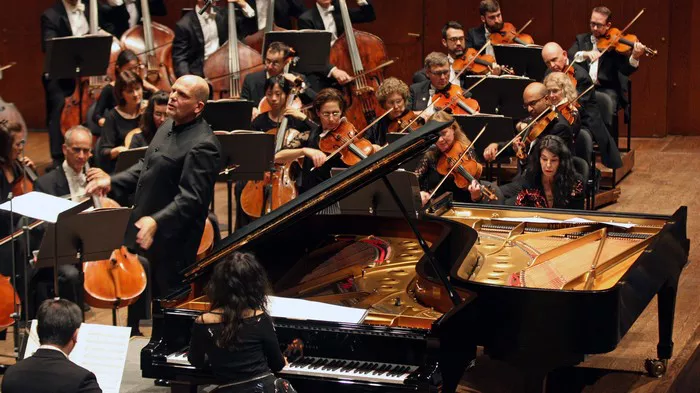The holiday season brings with it a magical atmosphere filled with joy, warmth, and timeless music. Among the various genres that resonate during this festive time, classical Christmas music stands out for its elegance, nostalgia, and enduring appeal. In this article, we’ll explore the essence of classical Christmas music, delve into its history, highlight some iconic compositions, and discuss why it continues to captivate audiences around the world.
Exploring the Origins of Classical Christmas Music
Classical Christmas music traces its origins to ancient musical traditions intertwined with religious festivities. The early Christian Church incorporated music into its worship, giving rise to hymns and chants that celebrated the birth of Jesus Christ. Over time, these musical expressions evolved, culminating in the rich tapestry of classical compositions we cherish today.
One of the pivotal moments in the history of classical Christmas music is the Baroque era, characterized by composers like Johann Sebastian Bach and George Frideric Handel. Bach’s “Christmas Oratorio” is a monumental work that narrates the story of Christ’s birth through a series of cantatas, each capturing the essence of the Nativity with profound musicality. Handel’s “Messiah,” composed in 1741, is another masterpiece that transcends time, blending jubilant choruses with poignant arias that reflect the joy and reverence of Christmas.
Iconic Compositions in Classical Christmas Music
1. “The Nutcracker” by Pyotr Ilyich Tchaikovsky: This timeless ballet, first premiered in 1892, transports audiences into a whimsical world of enchantment and fantasy. Tchaikovsky’s masterful orchestration and melodic ingenuity shine through iconic pieces like the “Dance of the Sugar Plum Fairy” and the “Waltz of the Flowers,” evoking a sense of wonder and magic that defines the Christmas season.
2. “Ave Maria” by Franz Schubert: Schubert’s “Ave Maria,” composed in 1825, remains one of the most beloved and poignant pieces in classical music. Its lyrical beauty and devotional tone make it a cherished selection for Christmas concerts and religious services, resonating with themes of faith, hope, and divine grace.
3. “O Holy Night” by Adolphe Adam: This timeless carol, first performed in 1847, has captured the hearts of listeners worldwide with its powerful message and emotive melodies. Adam’s composition, paired with the evocative lyrics by Placide Cappeau, creates a musical tableau of the Nativity, inviting listeners to reflect on the profound significance of Christ’s birth.
4. “Carol Symphony” by Victor Hely-Hutchinson: This delightful symphonic medley, composed in 1927, weaves together traditional Christmas carols with orchestral grandeur and festive exuberance. Hely-Hutchinson’s arrangement, featuring beloved tunes like “O Come, All Ye Faithful” and “God Rest Ye Merry, Gentlemen,” captures the joyous spirit of Christmas celebrations with vibrant energy and musical flair.
The Timeless Appeal of Classical Christmas Music
What sets classical Christmas music apart is its timeless appeal that transcends generations. These compositions, steeped in tradition yet resonant with universal themes, evoke emotions and memories that connect us to the essence of Christmas. Whether it’s the haunting beauty of “Silent Night” or the jubilant exuberance of “Joy to the World,” classical Christmas music creates a sense of unity and shared experience during the holiday season.
Furthermore, classical Christmas music serves as a cultural bridge, bringing people of diverse backgrounds together through shared musical experiences. From grand orchestral performances in majestic concert halls to intimate choir recitals in community settings, these musical traditions foster a sense of belonging and collective joy that defines the spirit of Christmas.
Influence and Legacy of Classical Christmas Music
The influence of classical Christmas music extends beyond its artistic merits, shaping cultural and social narratives surrounding the holiday season. These timeless compositions have inspired countless adaptations, from reimagined arrangements to innovative interpretations by contemporary artists. Through film, television, and digital media, classical Christmas music continues to permeate popular culture, reinforcing its enduring legacy and relevance in modern times.
Moreover, classical Christmas music holds a special place in the hearts of families and communities, serving as a soundtrack for cherished traditions and celebrations. Whether it’s singing carols around a crackling fireplace or attending festive concerts with loved ones, these musical experiences create lasting memories and deepen our connection to the spirit of Christmas.
Conclusion
In conclusion, classical Christmas music stands as a testament to the enduring power of music to evoke emotions, foster unity, and celebrate cherished traditions. From timeless masterpieces by renowned composers to beloved carols that resonate across generations, this genre continues to captivate and inspire audiences worldwide. As we embrace the magic of Christmas, let us revel in the beauty and richness of classical Christmas music, a treasured legacy that brings joy, hope, and wonder to hearts young and old alike.

